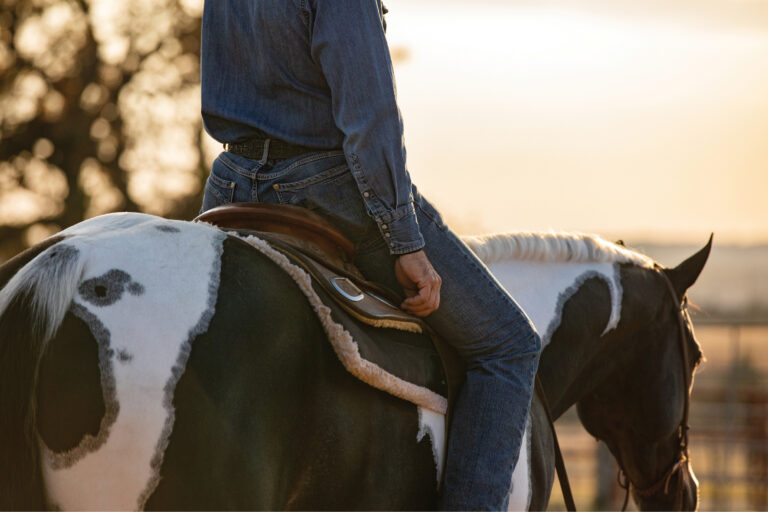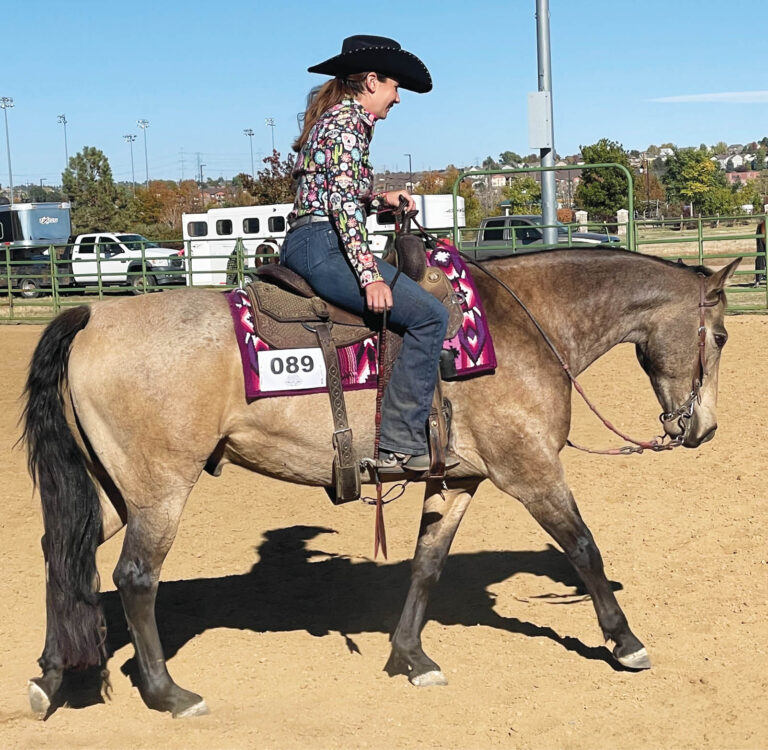First, it’s important to understand what heat stress is. Heat stress occurs when your horse’s regular method of cooling down—sweat—is not enough to keep your horse’s body temperature regulated. This typically occurs after a prolonged period of exercise in hot and/or humid environments or when a horse is out of shape, causing your horse’s fluid or electrolyte levels to fluctuate.
This will keep him from sweating or cause excessive sweating to try to regulate his temperature. You’ll also notice a horse experiencing heat stress will be lethargic and have increased heart and breathing rates. To quickly check for heat stress, pinch the skin of your horse’s neck and shoulders to see how long the “skin tent,” or pinched skin, stays in place until returning to normal. If it lasts more than a couple of seconds, your horse could be at risk. If left unaddressed, heat stress can escalate to heat stroke, which can be fatal.

How can it be prevented?
Along with monitoring your horse as he exercises, you can take a few simple steps to keep your horse from overheating in the first place.
- Water should be prioritized as the heat picks up. And especially during the height of summer when temperature and humidity are soaring. By providing regular access to fresh, cool drinking water, you encourage your horse to stay hydrated, which helps him from becoming dehydrated when he sweats and keeps his internal temperature cooler.
- Nix the exertion when the combined temperature and humidity are over 150 degrees Fahrenheit. On days when it’s exceeding these temperatures because of high humidity and heat, it’s best to avoid riding altogether or wake up early or ride late when the temperatures are a little more reasonable.
- Acclimation is the most important prevention strategy you can take to avoid heat stress. If you’re coming into summer after a long, cold winter, your horse, like you, will need to adjust to the change in temperature. If you need to ride when it’s warmer or know you’ll need to travel and potentially compete somewhere warm, give your horse time to adjust. Also, try to keep strenuous work to a time of day that’s cooler and work up to longer rides in the heat.
- Provide shade to help your horse avoid the sun’s radiation. If you’re at an event, keep your horse tied in a shaded area, rather than sit on horseback while you watch. At home, make sure your horse has a place to retreat to such as a loafing shed, barn, or tree to avoid the sun during the heat of the day.
Keep Him Cool
- Cold hose and ice bath after your ride to help your horse cool down. To get the most benefit, focus on the areas of the body with the most blood flow. Such as the head, neck, back, and ribcage rather than his rear end. Think about yourself and how quickly your core temperature rises when your midsection gets warm—prioritize those areas for hosing.
- Promote evaporation by avoiding the use of blankets, towels, cold sheets, or any other cover on your horse when he’s hot. While some of the sweat blankets can be helpful to soak up sweat, use them after your horse cools down since a cover can disrupt his regular sweat-evaporation process.
- Ventilate barns and reduce stagnant air in confined areas by installing overhead or box fans. Even when your horse isn’t working, he can still experience a heat event if the conditions are severe.
How can it be treated?
Treatment will depend on the severity of the heat stress. If you think your horse is experiencing a heat event, contact your vet immediately. Cool your horse’s head and midsection with cool or cold water and move him to the shade. You’ll also want to offer fresh water in small intervals—do not allow him to drink a lot of water at once. If he’s having a heat event, he’s also probably dehydrated. Too much water can cause further issues with his electrolyte balance.
When your vet arrives, they will likely provide IV fluids and electrolytes to replenish fluids. Your horse should be able to ease back into exercise in a few days if managed correctly.






